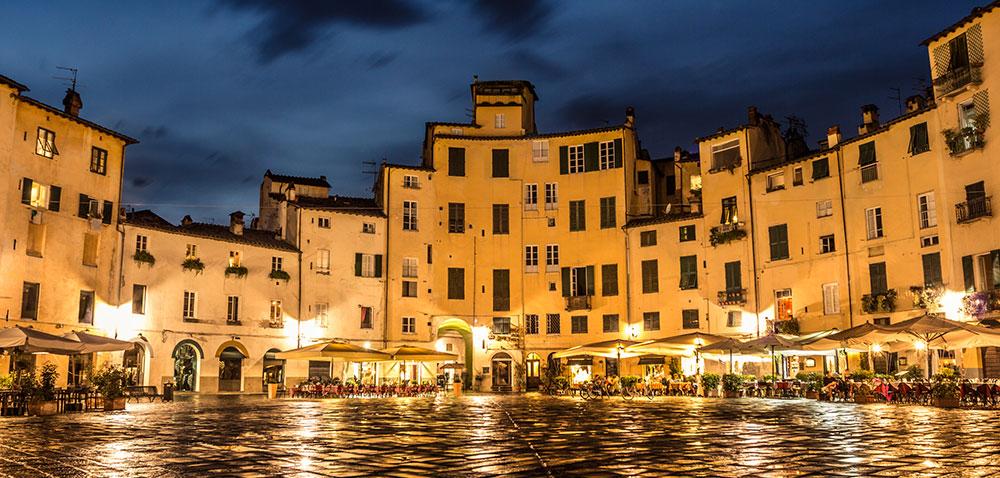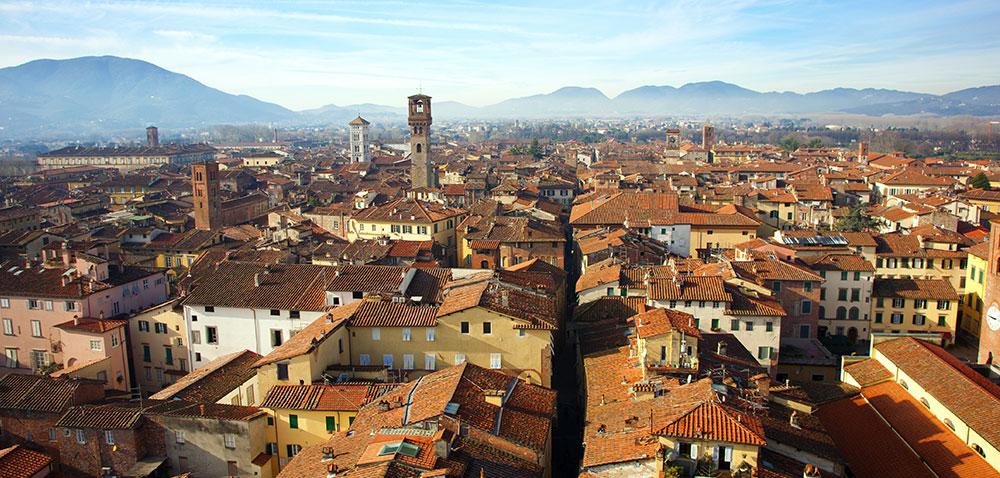Lucca: city of 100 churches
Tuscany is well known for its stunning renaissance architecture and historic monuments. But few cities can boast as much great architecture in as small a space as Lucca. An important Latin colony since 180 B.C, Lucca has preserved many of the iconic buildings that helped cement its reputation as an important regional capital, including its amphitheatre, cathedral and traditional street layout of cardo (narrow streets running north to south) and decumano (wider streets running west to east). Also unmissable are the fortified walls surrounding the city. Built to keep out invaders and one of the few intact medieval walls in Italy, they now serve as a reminder of less peaceful times (though tranquillity is easily found when taking a stroll atop them).
Lucca saw great prosperity as it became a leading textile manufacturer and exporter, the quality of its silks setting a benchmark Europe-wide. As a result of this economic success, money flowed into the city and much was invested in making it a beautiful, safe place to live.
Religion has always played a big part in Luccan life (Lucca was a key stopover on the Pilgrimage route of Via Francigena, a focal point for medieval communion), so plenty of money made its way to the building of churches. Known as ‘The City of 100 Churches’ Lucca has an impressive range, with examples from many important eras. From the renaissance and gothic, to medieval and Roman, while not exactly 100 in number, it would be impossible to properly visit all the churches of Lucca in one day.
Lucca saw great prosperity as it became a leading textile manufacturer and exporter, the quality of its silks setting a benchmark Europe-wide. As a result of this economic success, money flowed into the city and much was invested in making it a beautiful, safe place to live.
Religion has always played a big part in Luccan life (Lucca was a key stopover on the Pilgrimage route of Via Francigena, a focal point for medieval communion), so plenty of money made its way to the building of churches. Known as ‘The City of 100 Churches’ Lucca has an impressive range, with examples from many important eras. From the renaissance and gothic, to medieval and Roman, while not exactly 100 in number, it would be impossible to properly visit all the churches of Lucca in one day.


